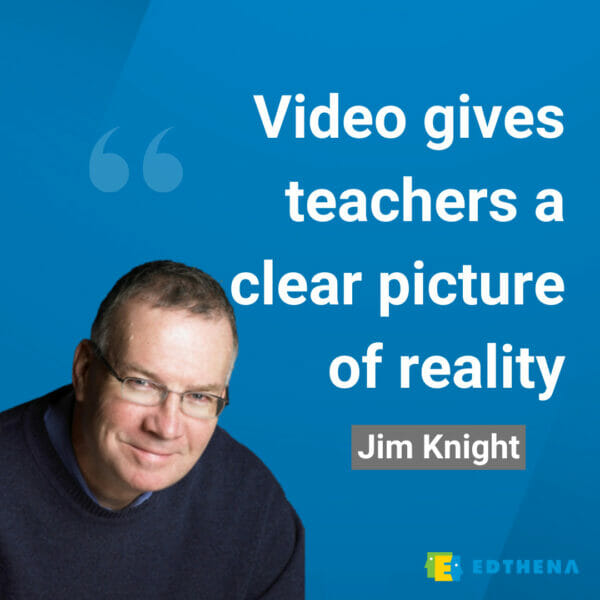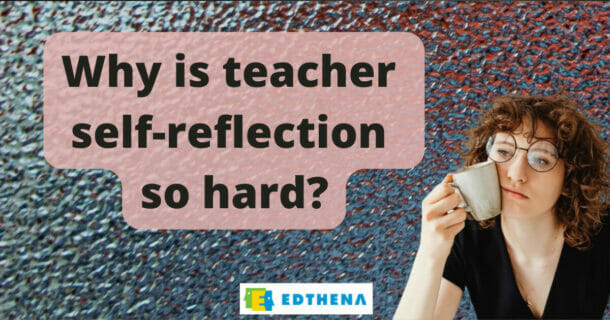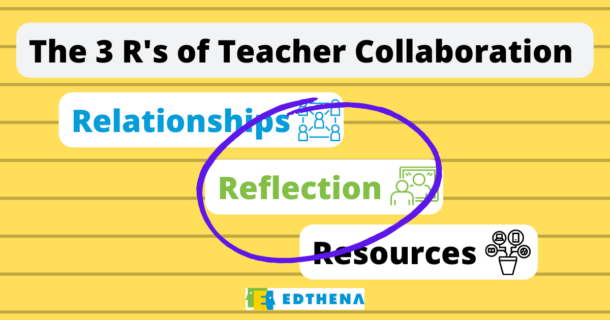Strengthening Teacher Collaboration: Reflect Before (and After!) You Connect
A version of this post about teacher collaboration originally appeared in the February 2023 edition of Language Magazine.
There are many adages about teaching being a team effort. What’s happening for students in one classroom is interconnected with what’s happening for students in other classrooms.
Collaborating with colleagues and instructional coaches is key for teachers developing a shared professional vision for student success as well as finding ways to continually increase their own effectiveness within their classrooms.
When teachers collaborate, they can share best practices for classroom instruction, problem-solve improvement areas, and learn new ideas to try with students.
Why then do many educators roll their eyes at the “PLC time” or “team meeting” on their weekly schedules? It’s because, too often, these reserved times for educator collaboration simply don’t feel like a valuable investment of time compared to other tactical and urgent issues on teachers’ already-busy schedules.
So how do educators make collaborative time more productive and of higher value to themselves? Teachers can strengthen collaboration with one another through individual self-reflection.
Discussions are more fruitful when teachers look at their own teaching before meetings
In order for teachers to share best practices and problem-solve with other educators like their teammates or instructional coaches, they must know what is or is not working effectively in their classrooms. Sometimes this is easily identifiable, but other times it is difficult for educators to accurately assess their own teaching strengths and areas for improvement.

One helpful practice is watching videos of one’s own classroom instruction.
Just like athletes rewatch game footage to see how they can improve, teachers can watch classroom video and see their techniques in action. Jim Knight, an instructional coaching expert and author, describes classroom video as helping teachers “paint a clear picture of their current reality.”
Watching their own teaching on video gives teachers access to more accurate classroom insights, priming them for rich discussions. Without having reflected on video of their own teaching, teachers may go into collaborative meetings talking about what they think or feel is happening, instead of what actually happened in the classroom. Videos of classrooms provide impartial data about what actually happened during a lesson.
But simply watching the video is not enough.
Valuable self-reflection occurs when educators watch classroom video and intentionally note the specific moments and teacher moves that are effective, or not, for student learning.
Having this reflection in-hand for a PLC meeting or a conversation with an instructional coach can be incredibly powerful for the teacher. It allows teachers to ensure the in-person collaboration can quickly move beyond the surface details of what happened and into the thornier topics of what might need to be changed within the classroom space in order to impact student learning.
Reflecting on video and coming prepared for a conversation can be cognitively complex to do on one’s own without structures or support. But technology can be helpful for successfully analyzing one’s own teaching.
Take, for example, Summer Workman, a 7th-grade language arts teacher in Keller Independent School District in Texas with nearly two decades of experience in the classroom.
Summer collaborates with an instructional coach for feedback on her teaching, but realized that their conversations would be more productive if she gathered her own insights beforehand. She felt nervous reflecting on her teaching on her own, so she used AI Coach by Edthena to support her independent video reflection and analysis. Within the platform, Summer started a chat-style conversation with a virtual, computerized coach that guided her on how to observe for specific skills within her classroom.
Then, Summer tagged specific moments of her teaching and categorized them as strengths or areas for improvement aligned to the professional learning goals that were important to her.
Doing this reflective work prepared Summer to dive right into asking her instructional coach for targeted support about “questioning techniques.” No in-person collaboration time felt like it was wasted trying to remember how the lesson went or wondering what to ask the coach.

Summer’s experience can be all teachers’ experience since it is easy to capture video of classrooms with available devices. The key to self-reflection is having the proper support structures and protocols to independently reflect on and analyze teaching.
With a head start on identifying their own strengths and growth areas, teachers’ conversations with each other or with their coaches are more fruitful.
When teachers take the time to reflect and have support, such as AI Coach by Edthena, for that complex thinking work, they benefit in the long run from more meaningful collaboration.
Reflection after teacher collaboration supports classroom goal-setting
After productive collaboration, there’s often a metaphorical, or literal, whiteboard full of ideas.
But leaving a meeting or conversation can still be followed by a frustrated, “Now what?”
Even though new teaching strategies or best practices might have been highlighted through collaborative conversation, it can be difficult for educators to know how to implement them in their classrooms the next day. Turning ideas into something actionable is crucial, otherwise, the collaborative work will be fruitless.
To make the most out of scheduled collaborations, teachers should plan additional time for self-reflection afterward. This additional time is critical to reflect and process how they will take their new ideas and turn them into next steps.
For example, perhaps an idea surfaced during a PLC for eliciting more student engagement from bilingual students. A teacher can take time to reflect on concrete activities or questions they will add to their lesson plans.
Setting clear benchmarks can be key to following through after collaboration time. For example, if a new teaching strategy involves increasing academic language for EL students, teachers should reflect on how they will know if this strategy is effective. Perhaps students will use academic vocabulary twice as often in their writing.
During this moment of pause for reflection between teacher collaboration and classroom action, it may also be helpful for teachers to consider exactly when they will enact change in their classroom by choosing a set date to start their action plan.
Taking time to reflect on how a new strategy will be measured to be successful, or determining the what’s and when’s of new strategy implementation, is important for teachers making the most of their collaborative discussions.
Why teacher reflection is key to productive professional collaboration

It may seem counterintuitive to suggest that self-reflection is a critical ingredient to better educator collaboration. But the reason for this is self-reflection puts teachers in the driver’s seat of their own learning and professional development. Sometimes this is described as increasing teacher autonomy.
Teacher autonomy is one of those phrases that gets thrown around a lot, but it’s actually a simple concept: teachers need to feel in control of themselves and empowered to create changes within their classrooms that are in the best interest of their students.
There are many forces that may act against a teacher’s feeling of autonomy, and some of those forces may be outside the locus of control for the teacher. But setting aside time for self-reflection is squarely within the control of the teacher.
When teachers have time to self-reflect, they can shift the dynamic of their interactions with colleagues. They can arrive at those conversations with a solid, data-rich understanding of their classrooms. They can take the time to recognize the strengths they have to share with others and also prepare themselves for conversations about opportunities for professional growth. They also put the solutions and ideas generated in those conversations into actual classroom practice.
Carving out time for individual teacher reflection, before, by reflecting on videos of one’s own teaching, and after, to determine classroom action steps, is how teachers make meaning and take away new insights from collaborative time.
Learn more about AI Coach by Edthena.
